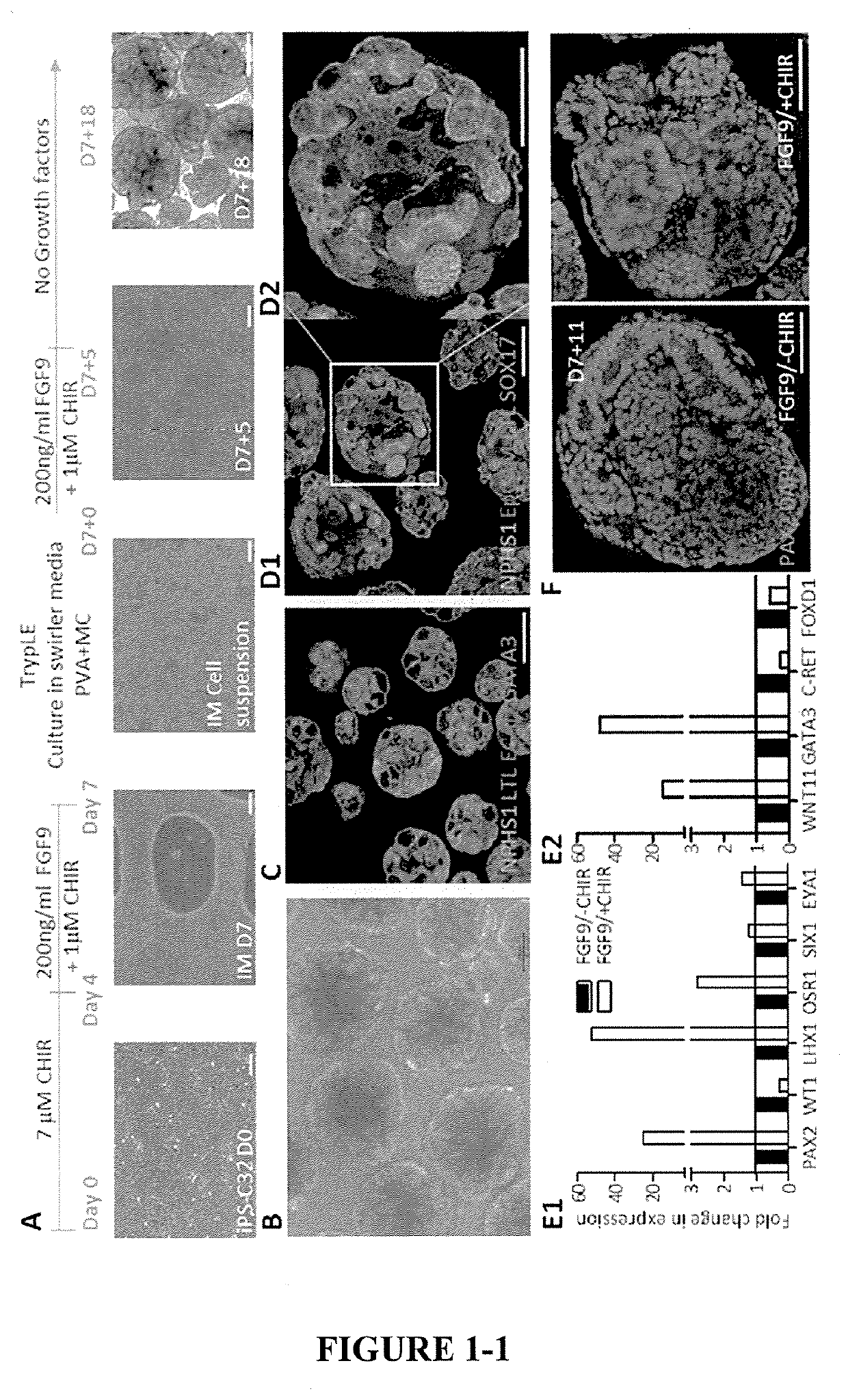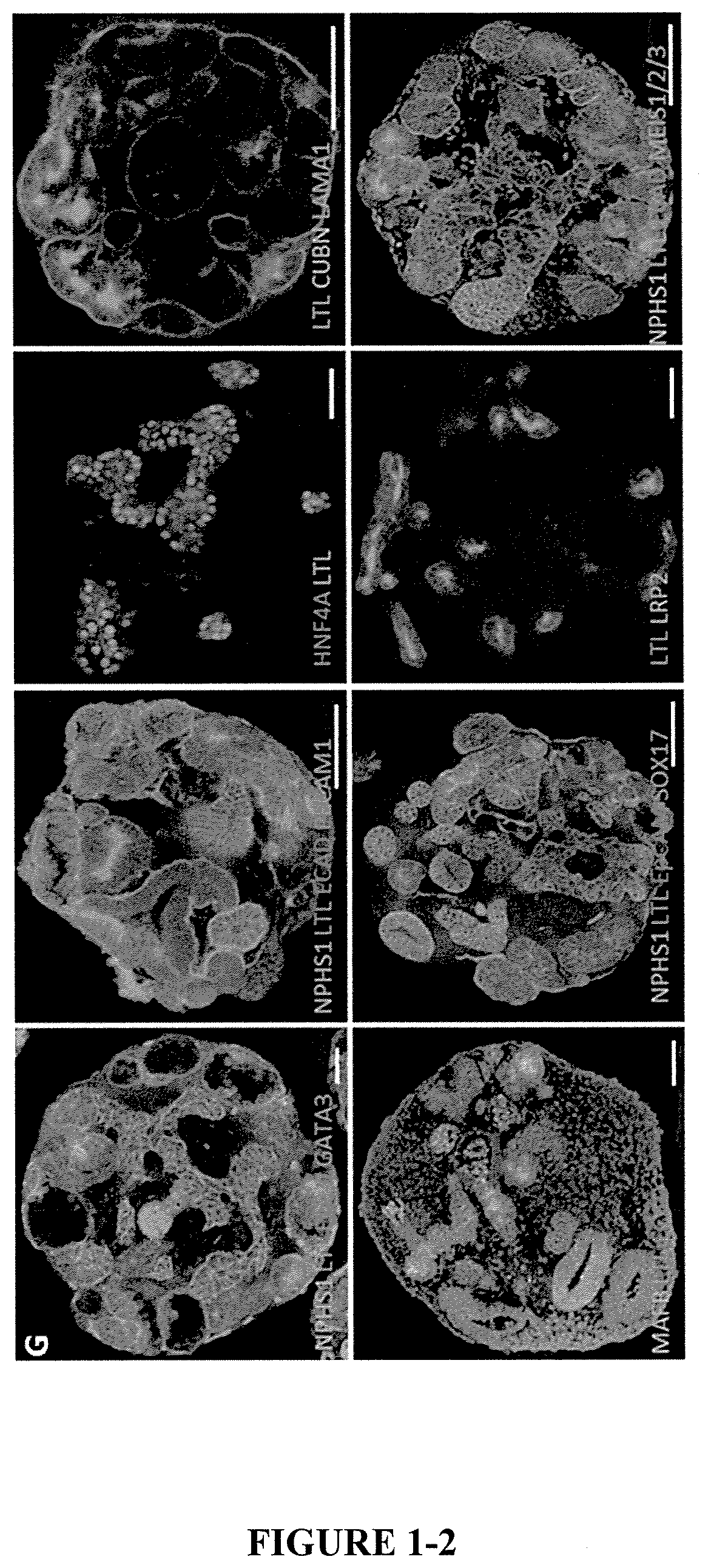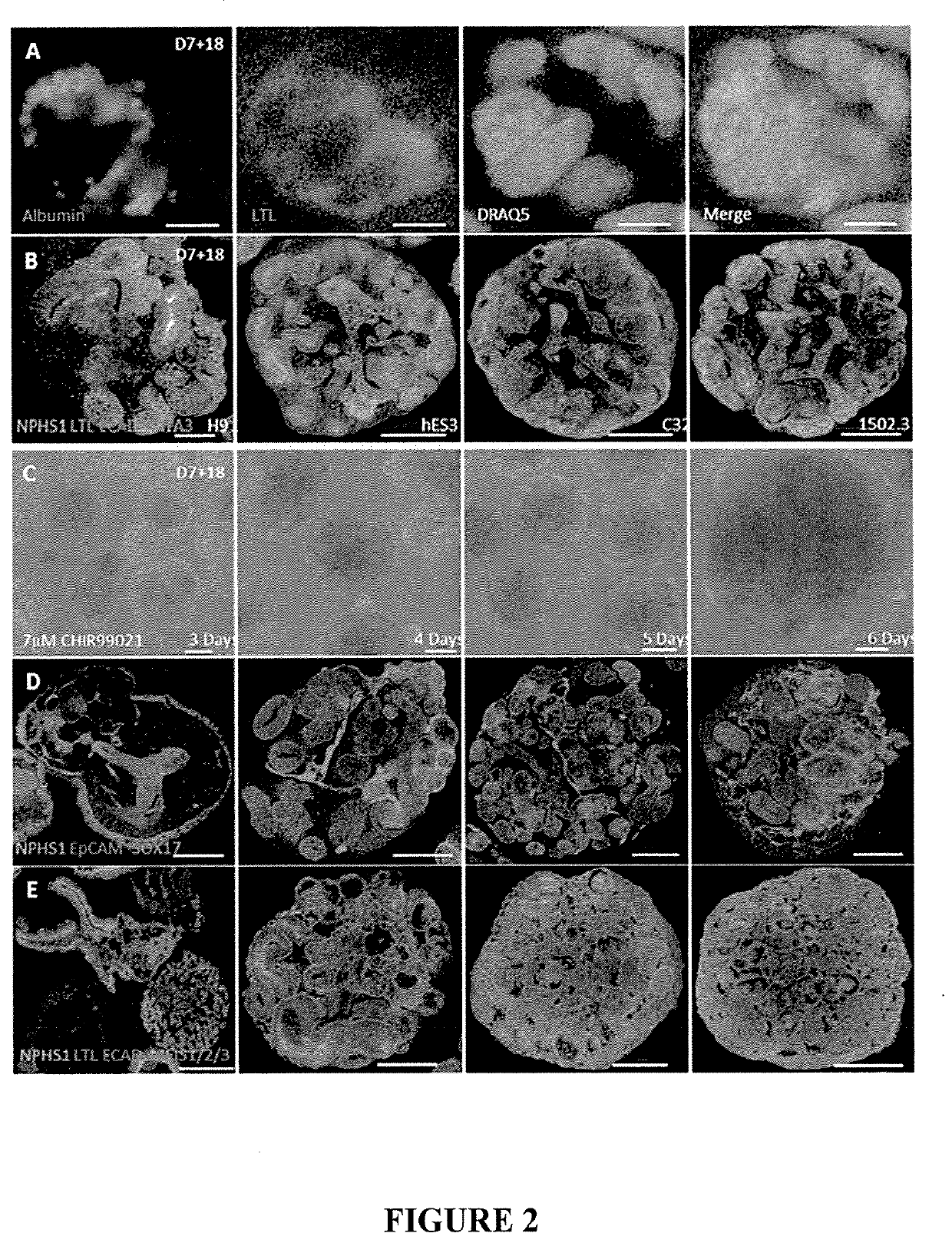Composition and method
a kidney and organoid technology, applied in the field of kidney organoids, can solve the problems of affecting the quality of life of patients, and affecting the development of kidney organoids, so as to improve the quality of life of patients, and facilitate the long-term image and culture.
- Summary
- Abstract
- Description
- Claims
- Application Information
AI Technical Summary
Benefits of technology
Problems solved by technology
Method used
Image
Examples
example 1
and Maintenance of hPSC
[0186]Human ES cells (H9 cells) were grown on mouse embryonic fibroblast (MEF) feeders in a DMEM media supplemented with 10% KOSR (Life technologies) and bFGF. Cells were cultured to 80% confluency before splitting using TrypLE (Life technologies). Before differentiation, ES cells were adapted to matrigel (Corning) surface in the absence of MEF feeders in a MEF conditional media and bFGF.
[0187]Human iPS cells were grown as individual colonies on geltrex (Life technologies) coated plates in an E8 media (Life technologies). Passaging of the iPS cells was performed once with EDTA once the cells reached 60-70% confluency or every 3 days.
[0188]Dissociation of hPSC into single cells was achieved using TrypLE and cells were seeded on a matrigel coated plated at 15,000 cells / cm2. Cell numbers were determined using a haemocytometer. Matrigel adapted hES cells were seeded using MEF conditional media. Human iPS cells were seeded as single cells in E8 media using revita c...
example 2
n of Improved IM
[0189]hPSCs or hES were differentiated into intermediate mesoderm by exposing cells to high concentration of CHIR (7 μM) for the first 4 days in APEL2 or TeSR-E6 media (Stem cell technologies) media with 3.5% protein free hybridoma media (PFHM) (Thermo Fischer), APEL (Stem cell technologies) or E6 media (Stem cell technologies). Media was refreshed on day 2. The cultures were subjected to an additional 3 days (days 5 to 7 from seeding) of a low concentration of CHIR (1 μM) in addition to FGF9 and heparin (FIG. 1A, Examples 1-3). This results in induction of a mixture of intermediate mesoderm (IM) cells.
[0190]Gene expression profiles performed by qPCR on the swirling suspension cultures at D7+0 showed that addition of a low concentration and longer duration exposure of CHIR resulted in an increase in cap mesenchyme cells compared to shorter exposure (FIG. 1E left panel). The expression of PAX2, LHX1 and OSR1 cells were more than 2 folds higher compared to short CHIR e...
example 3
Suspension Cultures
[0191]On day 7, IM cells produced using methods in Example 2 were dissociated using 1 ml of EDTA solution, further incubation in 1 ml EDTA for 3 minutes at 37° C. and EDTA solution was removed by aspiration without disturbing the IM cell layer (FIG. 1A). IM cells may also be dissociated using 1.5 ml of TrypLE™ select for 3 minutes at 37° C. and excess TrypLE™ was removed by centrifugation at 1500 RPM in a 15 ml falcon tube.
[0192]Stage 1 Media (Base media, FGF9 200 ng / ml, Heparin 1 μg / ml, 1 μM CHIR, 0.1% PVA, 0.1% MC) (2 ml) was added along with 10 μM Rho kinase inhibitor (ROCKi, 1:1000 dilution 10 μM, stem cell technologies) and cells were gently detached as a clumps using Gilson pipette. The cell suspension was transferred to 6 cm2 low adhesion dishes (Greiner bio) and passed through 40 μm cell strainers (BD biosciences).
[0193]The Stage 1 Media was toped up to 5 ml and the dishes were swirled in a Ratek orbital shaker at 60 rpm in a standard cell culture incubato...
PUM
| Property | Measurement | Unit |
|---|---|---|
| diameter | aaaaa | aaaaa |
| size | aaaaa | aaaaa |
| diameter | aaaaa | aaaaa |
Abstract
Description
Claims
Application Information
 Login to View More
Login to View More - R&D
- Intellectual Property
- Life Sciences
- Materials
- Tech Scout
- Unparalleled Data Quality
- Higher Quality Content
- 60% Fewer Hallucinations
Browse by: Latest US Patents, China's latest patents, Technical Efficacy Thesaurus, Application Domain, Technology Topic, Popular Technical Reports.
© 2025 PatSnap. All rights reserved.Legal|Privacy policy|Modern Slavery Act Transparency Statement|Sitemap|About US| Contact US: help@patsnap.com



